Home » Before Spotify: Why Tabletop Radios Still Spark Memory
Before Spotify: Why Tabletop Radios Still Spark Memory
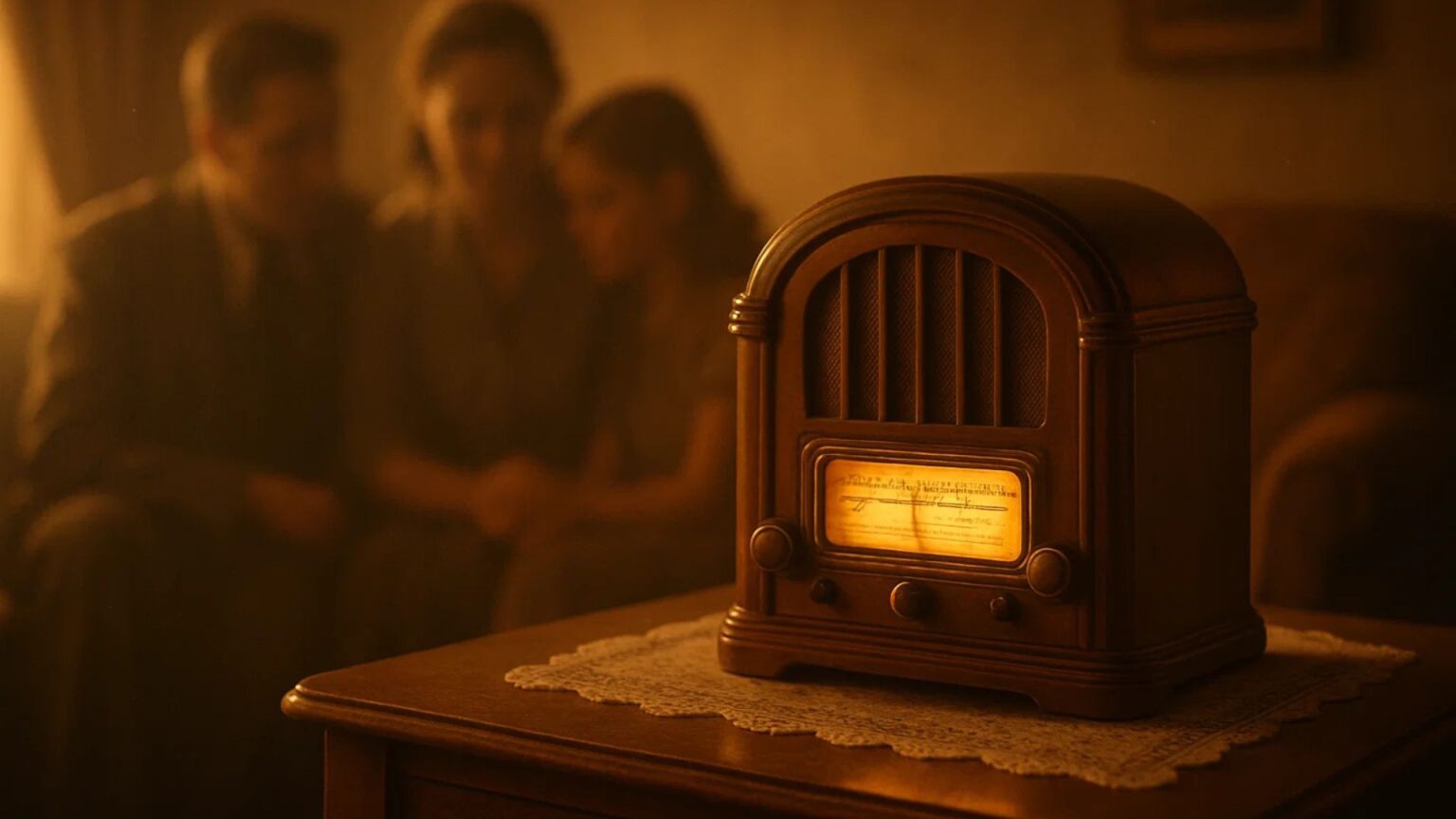
Before Spotify changed the way we listen to music, there was a different kind of magic—the kind that began with a quiet room, a glowing dial, and a crackle that felt like a promise. Picture this: the house is silent except for the soft hum that comes to life from a wooden tabletop radio sitting proudly in the living room. Scrolling wasn’t an option—you waited for entertainment.
Instead, people leaned in for it.
And when it arrived, you didn’t just hear it—you felt it. The glow of the dial lit up like a tiny sunset, and before a single word was spoken, that warm, familiar static filled the air like anticipation in sound form. Nobody called it “content.” To you—and to millions of families—it was connection. Real connection. Big league magic.
Back then, radios weren’t just devices—they were memory machines. Families didn’t gather around screens; they gathered around sound. The suspense of waiting for your favorite mystery show, the laughter echoing during a comedy hour, the thrill of hearing breaking news in real time—it wasn’t just heard. It was shared.
Sure, Spotify can shuffle playlists with one click. However, let’s be honest: it can’t recreate that goosebump moment when the crackle faded and the announcer’s voice rolled in like it had traveled just for you.
Because before there were streams, there were stories—and they came to life through glowing dials, static fizz, and imagination.
And that brings us to why tabletop radios weren’t just machines—they were memory keepers.
When the Tabletop Radio Was the Heart of the Home
Back in the day, the tabletop radio wasn’t just furniture—it was the heartbeat of the living room. It often claimed a proud spot on a wooden shelf or embroidered linen runner, glowing softly as if it were alive. Families didn’t drift off into separate rooms the way people do today. Instead, they came together. The radio pulled them in like a warm invitation—no scrolling, no swiping, just gathering.
Everyone had a routine. Someone would adjust the dial. Another would hush the room. Kids would sit cross-legged on the floor, wide-eyed and ready. It didn’t matter if it was music, a mystery show, or the evening news—when that voice came through the speaker, it felt like the world outside paused.
In many ways, the radio acted like the emotional center of the home. While Spotify and streaming serve individuals, tabletop radios served entire families. Most importantly, they helped people feel connected without needing visuals. You heard the story—but you pictured the scene in your head.
That shared listening became shared memory. Which explains why, even today, the simple crackle of an old radio can make someone pause, smile, and whisper, “I remember…”
And once that crackle started, something special always followed…
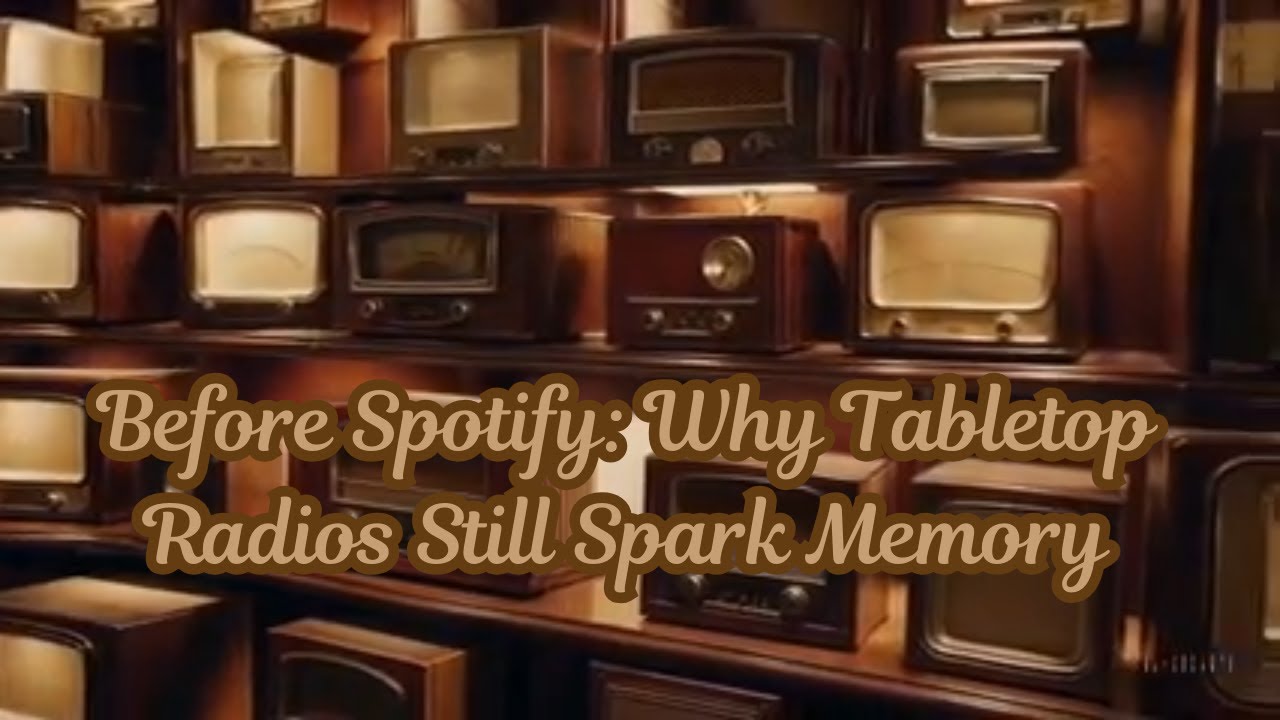
That First Crackle Before the Voice—Why It Still Gives Us Goosebumps
There’s something unforgettable about that first crackle—the gentle burst of static that signaled something extraordinary was about to happen. Even before a single note or voice appeared, your imagination was already awake. This wasn’t noise-it was anticipation it became something shared. The kind that made your chest tighten a little and your ears lean in as if they had their own heartbeat.
In fact, scientists say that sound-linked nostalgia hits deeper than visuals because it activates emotional memory more strongly. That tiny fizz of radio static wasn’t just an accident of technology—it became a trigger for excitement, a signal that a story, a song, or a moment worth remembering was about to begin.
When the silence broke and the announcer’s voice finally rolled in, it felt theatrical—like a curtain lifting. You didn’t just hear the voice; you felt it. And even though you couldn’t see the performer, your mind filled in the details. The crackle made it real, like the radio wasn’t just broadcasting—it was revealing.
Today, streaming begins instantly and cleanly. While that may feel convenient, it rarely feels personal. However, that imperfect radio crackle made every broadcast feel alive. You weren’t just tuning in; you were stepping into something shared, something enchanting.
After all, when imagination became the screen, radio turned every listener into a dreamer.
Before Spotify, Imagination Was the Screen—Radio Shows & Storytelling Glory
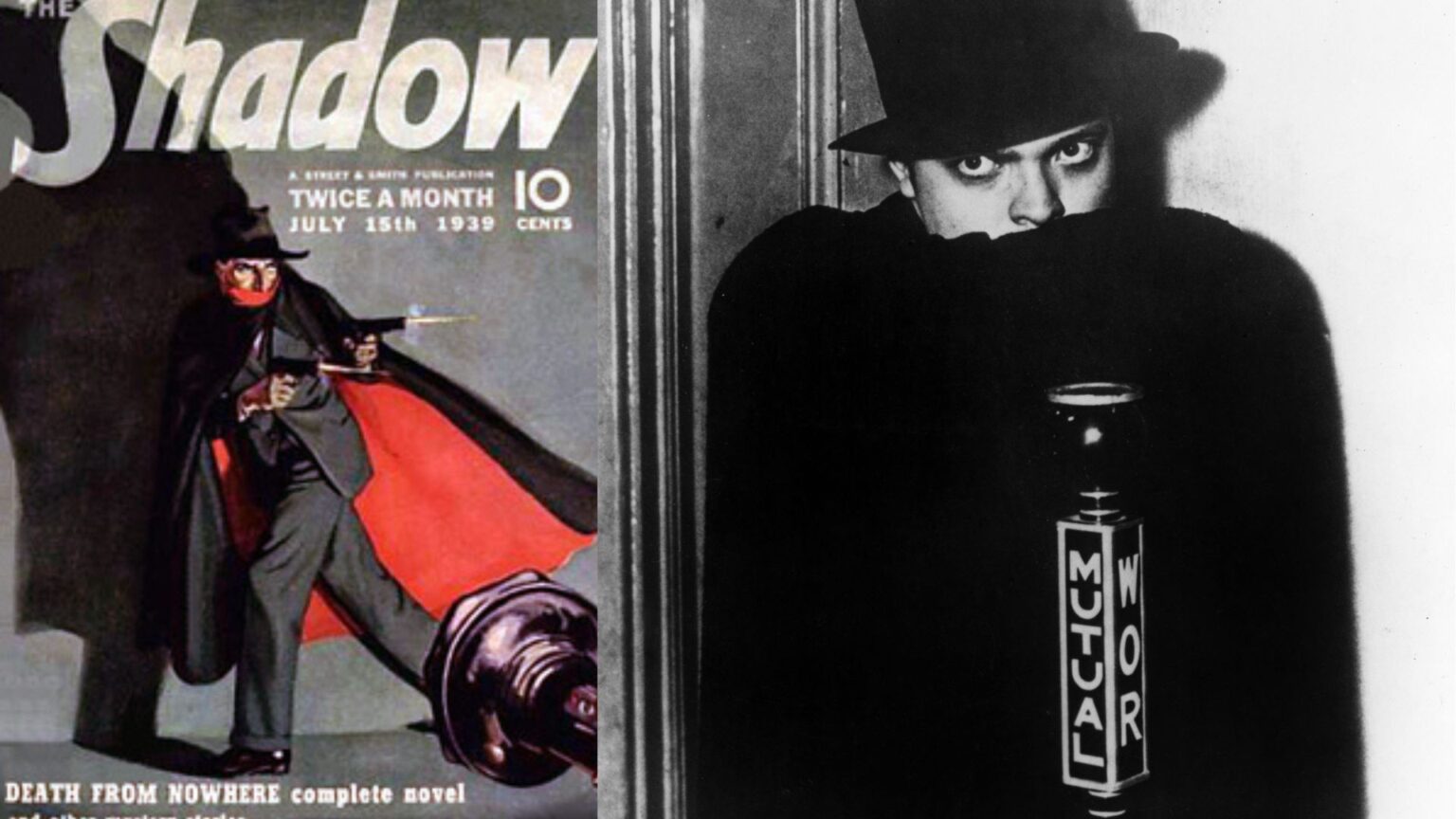
Long before binge-watching was a thing, families binge-imagined. Radio shows weren’t simply entertainment—they were worlds. Mystery dramas like The Shadow, cowboy adventures, comedy hours, and thrilling serials painted entire universes without a single picture. Yet somehow, those soundscapes felt more vivid than many high-definition screens today.
Why? Because the visuals were yours. You pictured the detective’s hat, the cowboy’s boots, and the villain’s sneer. The radio gave you the voice; your mind built the face. That kind of storytelling required participation, not passive consumption. You weren’t just an audience—you were a co-creator.
And because families listened together, everyone had their own mental version of the show. Afterward, they talked about it, argued over details, and debated storylines. It wasn’t just listening—it was bonding through imagination.
Even more, the voices of those radio hosts felt familiar—like trusted friends returning each week. Some kids even fell asleep to the warm hum of the radio, letting their dreams pick up where the show left off.
But the real power of radio wasn’t just in the stories—it was in how it brought people together to experience them.
Bonding Over Broadcasts—The Social Side of Radio Days
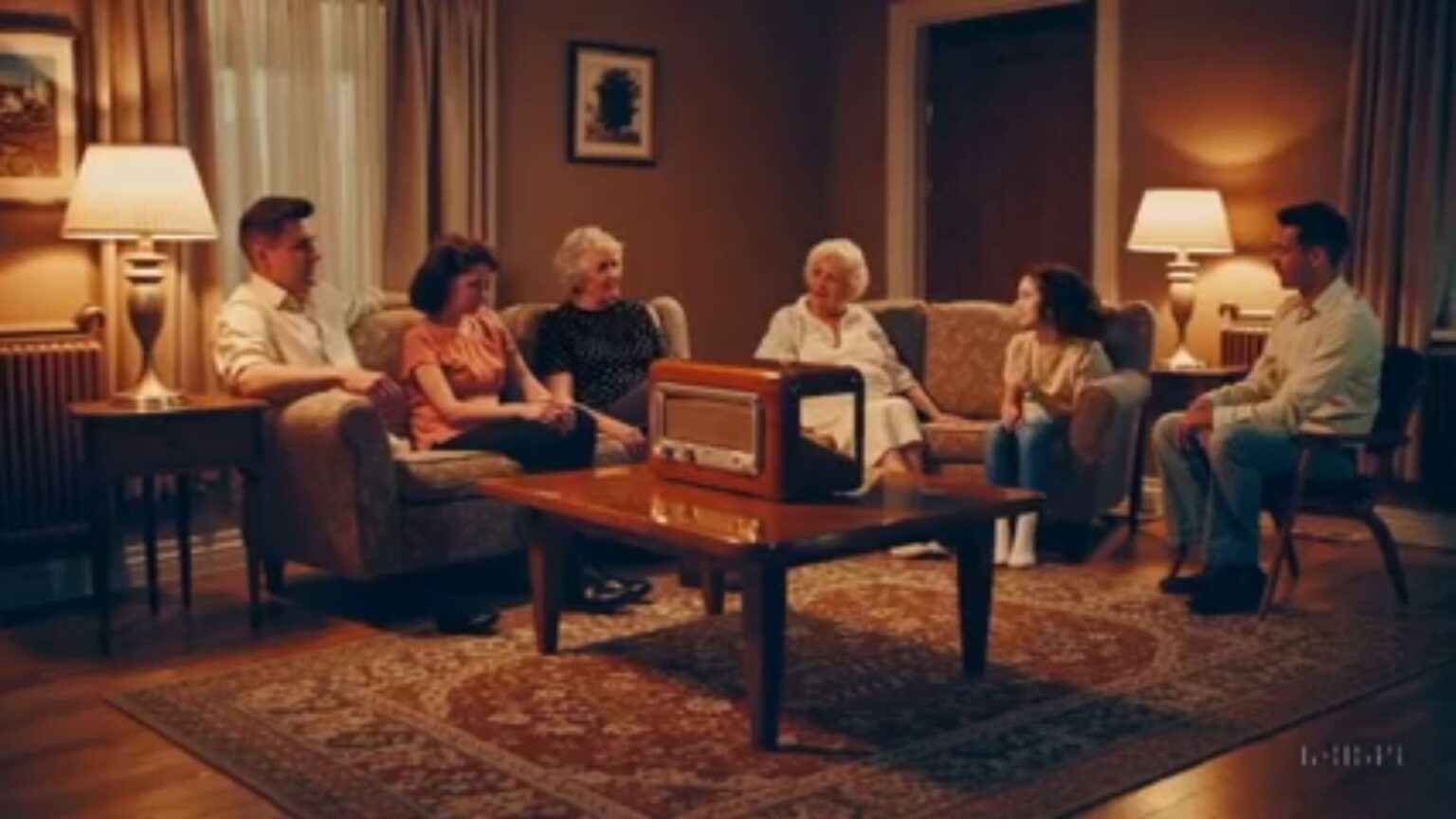
Before Spotify playlists were built for “me,” radio moments were built for us. Listening wasn’t an isolated activity—it was a shared ritual. Families didn’t slip away into headphones. Instead, they leaned in together, laughing at the same jokes, gasping at the same cliffhangers, and reacting in real time as one heartbeat.
There was no rewinding. No pausing. No “I’ll catch it later.” If you missed it, that moment was gone. Because of that, there was a heightened sense of togetherness, like the whole family was taking part in something fleeting and precious. And when the show ended? Conversations began.
Dad might ask, “Did you hear that twist?”
Mom might say, “I knew the villain was coming back.”
Kids might reenact scenes with toy props or try mimicking the character voices.
In a world without screens, sound became community.
Even neighbors sometimes joined in. If a family had a particularly admired radio, people would gather just to enjoy clearer audio or better reception from that household. Broadcasting wasn’t just about content—it was about connection.
Yet even as decades passed, the emotional pull of radio didn’t fade—it transformed into something collectible, meaningful, and irreplaceable.
Before Spotify: From Nostalgia to Collectible Gold—Why Tabletop Radios Still Matter
Even in today’s digital world, vintage tabletop radios command attention like miniature time machines. Their smooth wooden cabinets, curved dials, amber glow, and satisfying tuning clicks stir something deep inside us. They don’t just look vintage—they feel alive with memory.
For many people, collecting radios isn’t just a hobby—it’s a way to reconnect with a loved one or a forgotten moment. A child who once sat beside Grandpa listening to baseball games may now seek out the exact same model, not because they need it—but because it feels like home.
Even the sound of these radios matters. The analog warmth, the slight static, the imperfect clarity—those tiny flaws are what make them feel human, familiar, and real.
Because of this emotional pull, vintage radios have become highly collectible—not just as artifacts, but as anchors of identity and belonging. They stand on mantels, shelves, and desks not simply as décor, but as stories captured in wood and wire.
And while some people hunt down originals, others are rediscovering radio nostalgia through modern retro-style radios that bring back the magic—with today’s convenience.
Bringing the Crackle Back—Modern Retro-Style Radios That Keep the Memory Alive
Not everyone can track down an original 1940s or 1950s tabletop radio in working condition. However, that doesn’t mean the magic is gone. In fact, today’s retro-style radios are doing something remarkable—they’re bringing nostalgia back to life with a modern twist.
You can still have glowing dials, warm wood finishes, and vintage tuning knobs—but now with Bluetooth, USB inputs, clear FM reception, and even vinyl compatibility. It’s like stepping into the past while keeping a foot in today’s world. You can stream your favorite playlist but still feel like you’re tuning into something meaningful. That’s what makes these modern recreations truly special.
Here are a few beloved examples that blend classic charm with today’s convenience
Crosley CR31D-WA Companion Retro AM/FM Radio with Bluetooth Speaker: Connect to any Bluetooth-enabled device and stream your favorite playlist or podcast over the built-in full-range speaker
PRUNUS J-180 Vintage Retro Radio – Bluetooth Speaker with Stereo Sound, AM/FM Radio Portable with Loud Volume, BT5.0, TF Card & MP3 Player, Rechargeable Speaker
These pieces don’t just play music—they play memory. For many people, simply hearing a song through a radio-shaped device feels more meaningful than scrolling through Spotify on a phone. It’s about the act of tuning in, not just listening.
And yet, as people rediscover retro-style radios, one big question still lingers…
Before Spotify: Answering the Biggest Questions About Radio Nostalgia
Before Spotify turned music into a tap-and-go experience, radio shaped how people connected with sound, memory, and each other. Today, as more people fall in love with nostalgic audio experiences, questions often arise about why old radios still matter and what makes them feel so emotionally powerful. Below, we answer the most common questions people ask when rediscovering the world that existed before Spotify’s digital era.
What is the nostalgia radio format?
The nostalgia radio format refers to a broadcasting style that focuses on playing content from earlier decades, typically ranging from the 1920s through the 1970s. Before Spotify, people tuned in to radio formats dedicated to golden-age programs such as classic dramas, variety shows, big band performances, and early rock ’n’ roll. As a result, these stations recreate the emotional feel of a time when music and storytelling were shared experiences. Therefore, nostalgia radio isn’t just about old songs—it’s about reliving an era where anticipation, imagination, and connection came through the speaker.
What are the three types of radios?
Traditionally, radios were categorized into three main types:
AM Radios – Known for long-distance reception and talk shows.
FM Radios – Favored for higher sound quality and music clarity.
Shortwave Radios – Used for international broadcasts that reached far beyond local stations.
Before Spotify existed, these three formats shaped how people experienced global events and discovered entertainment. Moreover, each type connected listeners differently—making them essential pillars of the radio era.
What is the strongest nostalgia trigger?
The strongest nostalgia trigger for most people is sound, especially familiar audio cues like radio static, tuning dials, or the warm crackle before a voice appears. Because sound is closely tied to emotional memory, hearing even a short radio jingle or announcer intro can instantly transport listeners back to a comforting moment from childhood. In fact, before Spotify gave us instant access to music, listeners had to wait—and that anticipation made every moment more memorable. As a result, sensory triggers like static or warm analog tones often unlock deeper feelings than visuals alone.
What makes tabletop radios nostalgic for different generations?
Tabletop radios are nostalgic for different generations because they carry layered memories. For older listeners, they represent evenings gathered around sound before Spotify or streaming ever existed. Meanwhile, Gen X might associate them with grandparents or retro pop culture references. Younger generations often discover these radios through vintage décor trends or emotional storytelling online. Consequently, tabletop radios act like emotional time capsules—each generation connects to them through personal stories, family ties, or the romantic idea of simpler times.
Are vintage radios still collectible today?
Absolutely. Vintage radios from brands such as Philco, Zenith, and RCA are still highly collectible due to their craftsmanship, history, and emotional value. Before Spotify, these devices were essential household companions, and owning one today reminds people of moments shared around sound. Furthermore, well-preserved models with original components can be worth significant value in the collector’s market. Even non-functional units are often displayed as artistic nostalgia pieces in homes, cafes, and themed spaces.
Can modern retro radios really recreate the classic experience?
Modern retro radios do a surprisingly good job of recreating the look and feel of classic models, especially those with wood finishes, analog-style tuning dials, and glowing displays. However, while they often provide clearer sound and Bluetooth connectivity, they may lack the imperfect static charm that evoked emotion before Spotify’s digital clarity took over. That said, when people choose to play vintage-style broadcasts or old-time radio shows through them, the emotional effect can still feel deeply authentic. Therefore, while not identical, retro-style radios successfully bridge past and present, keeping nostalgia alive in modern living rooms.
Before Spotify: Wrapped in Memory—Why the Crackle Still Matters
In a world where everything is instant, seamless, and algorithmically recommended, something beautiful happens when we return to a sound that asks us to pause. Old radios didn’t just play audio—they played anticipation, imagination, and connection. Behind every glow of the dial, there was a moment waiting to be remembered.
We felt the warmth of the room. We listened together. We imagined harder. We cared more. That wasn’t a playlist—it was an experience. And for many of us, those memories are stored somewhere in the gentle fizz of static, in the click of a tuning knob, or even in the subtle creak of a wooden cabinet.
Today, whether we collect vintage radios or listen through retro-style recreations, we’re not just chasing old technology—we’re chasing the feeling of belonging to something shared and sincere.
Because before Spotify—and long before streaming—there were stories told through sound, and hearts tuned in together.
And here, at Nostalgia Nook Antiques, we believe those memories deserve a place to play again.
Bonus Promo: Bring the Golden Glow Back to Your Space
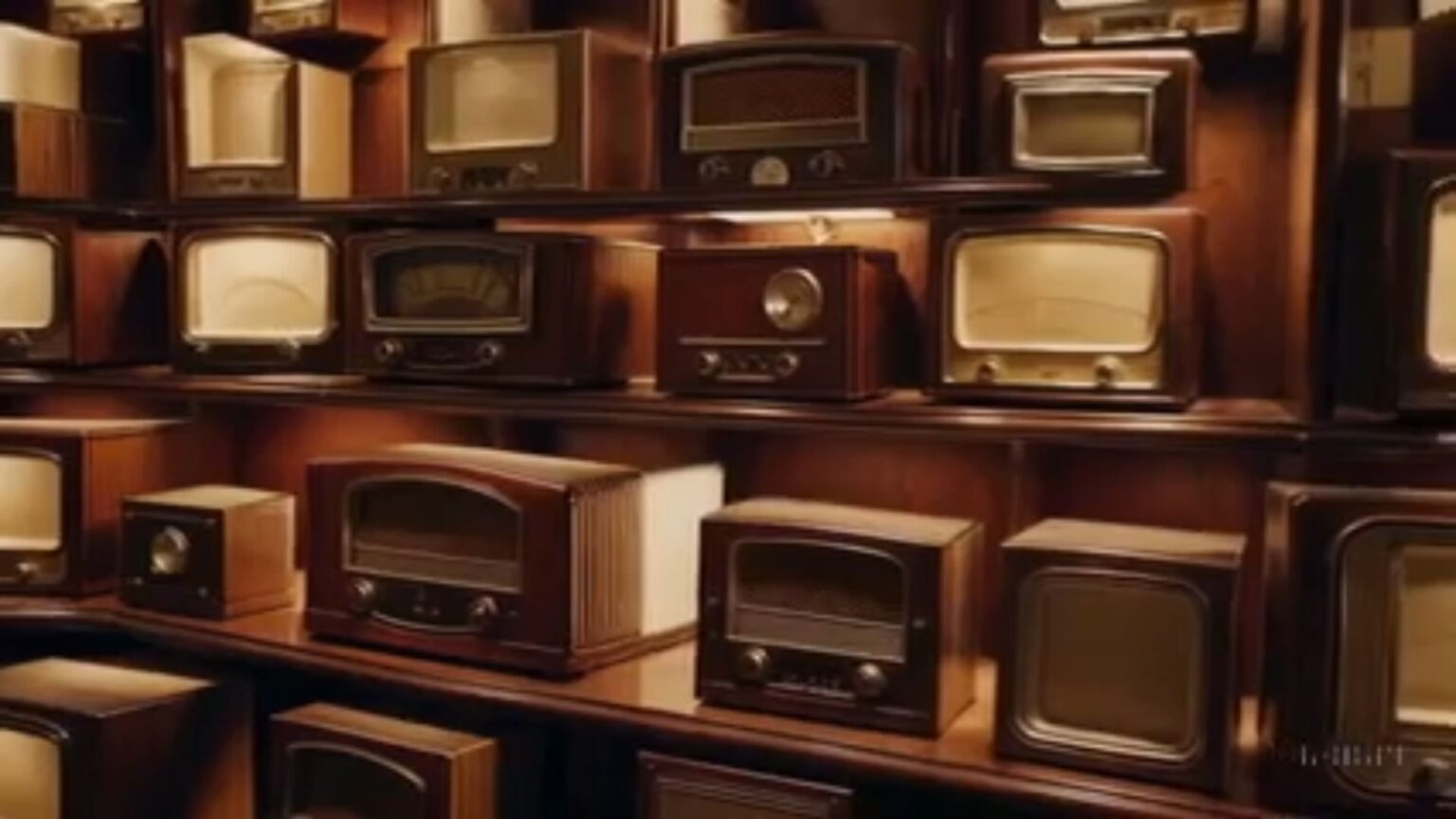
Before Spotify made music feel instant, radios made it feel meaningful. If you’re ready to bring that warm crackle and vintage charm back into your home, now’s the time. We’ve curated the best retro-style tabletop radios and nostalgic music accessories so you can relive the magic—without spending hours searching.
👉 Browse our curated Media Collection Here.
After all, when it comes to preserving memory-filled sound, you deserve something that feels as good as it looks.
Bonus: More Ways to Unlock Vintage Style

If you enjoyed learning about the charm of a skeleton key set display, you’ll love exploring more décor ideas that bring history and personality into your home. From rustic wall accents to farmhouse treasures, these pieces add conversation, curiosity, and timeless warmth to your space. Take a look at our other guides and discover even more ways to unlock vintage style in your everyday life.
Nostalgia of Snow Days: Family Fun Before Screens – Discover rustic touches that add cozy character to any space.
Top 5 Quirky Tin Signs That Scream Retro Cool (And Where To Hang ‘Em)—Learn how farmhouse details can transform your style.
Vintage Jukebox History: America’s Original Social Playlist—A practical guide for breathing life into vintage treasures.
Step Back In Time: 3 Stunning Rotary Phones That Work how these timeless radios can still spark nostalgia today.
Tradition, Treasures & Timeless Stories—Delivered Weekly
Every antique tells a story, and every tradition carries a memory. Our newsletter brings you closer to both, with inspiration, guides, and finds that make nostalgia part of your everyday life. Subscribe today and let the past brighten your future.